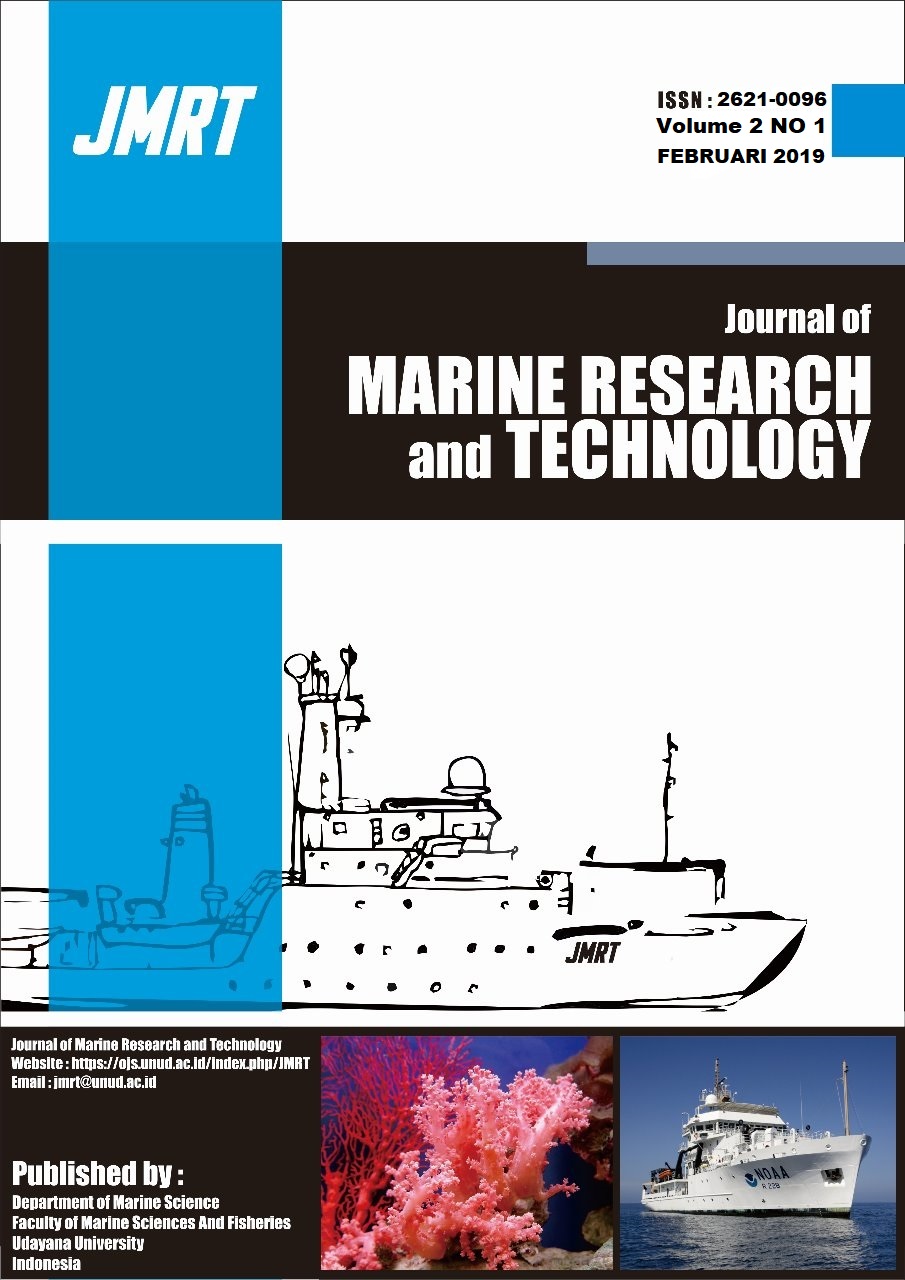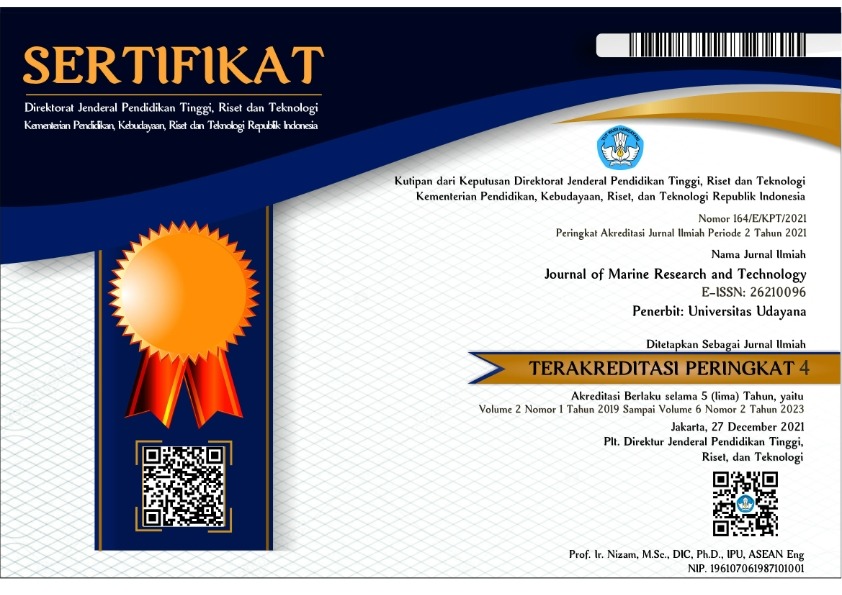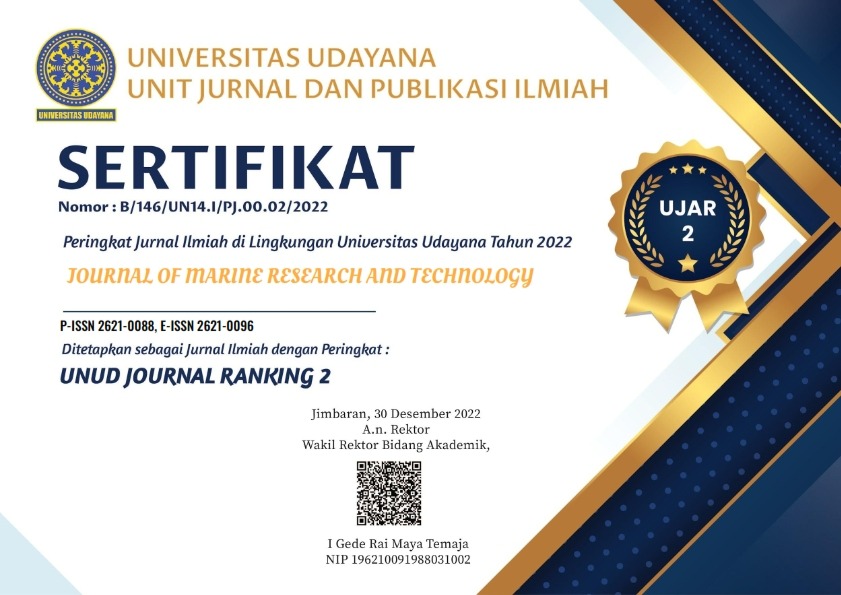Laju Penjalaran Rhizoma Lamun Thalassia hemprichii, Cymodocea rotundata, Halophila ovalis, dan Halodule uninervis yang Ditransplantasi Di Serangan Utara, Bali
Transplantasi; Laju pertumbuhan; Perairan Serangan Utara; Tingkat Kelangsungan Hidup
Abstract
Seagrass is also one of the carbon sinks at sea, and as a catcher of sediments that go to sea so seagrass can be used as a balancer of all marine ecosystems. In the seagrass ecosystem, associate various types of marine biota of significant value with a very high level of diversity. Seagrass is affected by environmental conditions and human activities. Serangan island from the 70s already existing tourism that developed there such as Turtle Waching and Dugong Waching. Dugong (Dugong dugon), a plant-eating mammal or herbivore mammal, the main food is seagrass. the existence of a reclamation project on Serangan Island caused many habitats and marine biota around Serangan Island waters to be damaged and lost, especially seagrass plants. This research to determine the seagrass survival rate if transplanted in the North Serangan waters region and to determine the growth rate of Rhizoma seagrass with Species Thallasia hemprichii , Cymodocea rotundata, Halodule ununervis, and Halophila ovalis transplanted in the waters of North Serangan. This research was conducted in the month of February - April 2018. The research consisted of two stations with one station in a dense region of human activity and the station 2 without any human activity. Seagrass transplantation is done by using frame made of iron with size 1x1 meter. The results showed that at station 1 the level of seagrass survival was lower than station 2, it was caused by the dense human activity at station 1. So was the rate of growth at station 1 lower than station 2. This could also be due to the water quality which is lower at station 1.
Downloads
Copyright Notice
The copyright to this article is transferred to Journal of Marine Research and Technology (JMRT). The copyright transfer covers the exclusive right and license to reproduce, publish, distribute and archive the article in all forms and media of expression now known or developed in the future, including reprints, translations, photographic reproductions, microform, electronic form (offline, online) or any other reproductions of similar nature.






